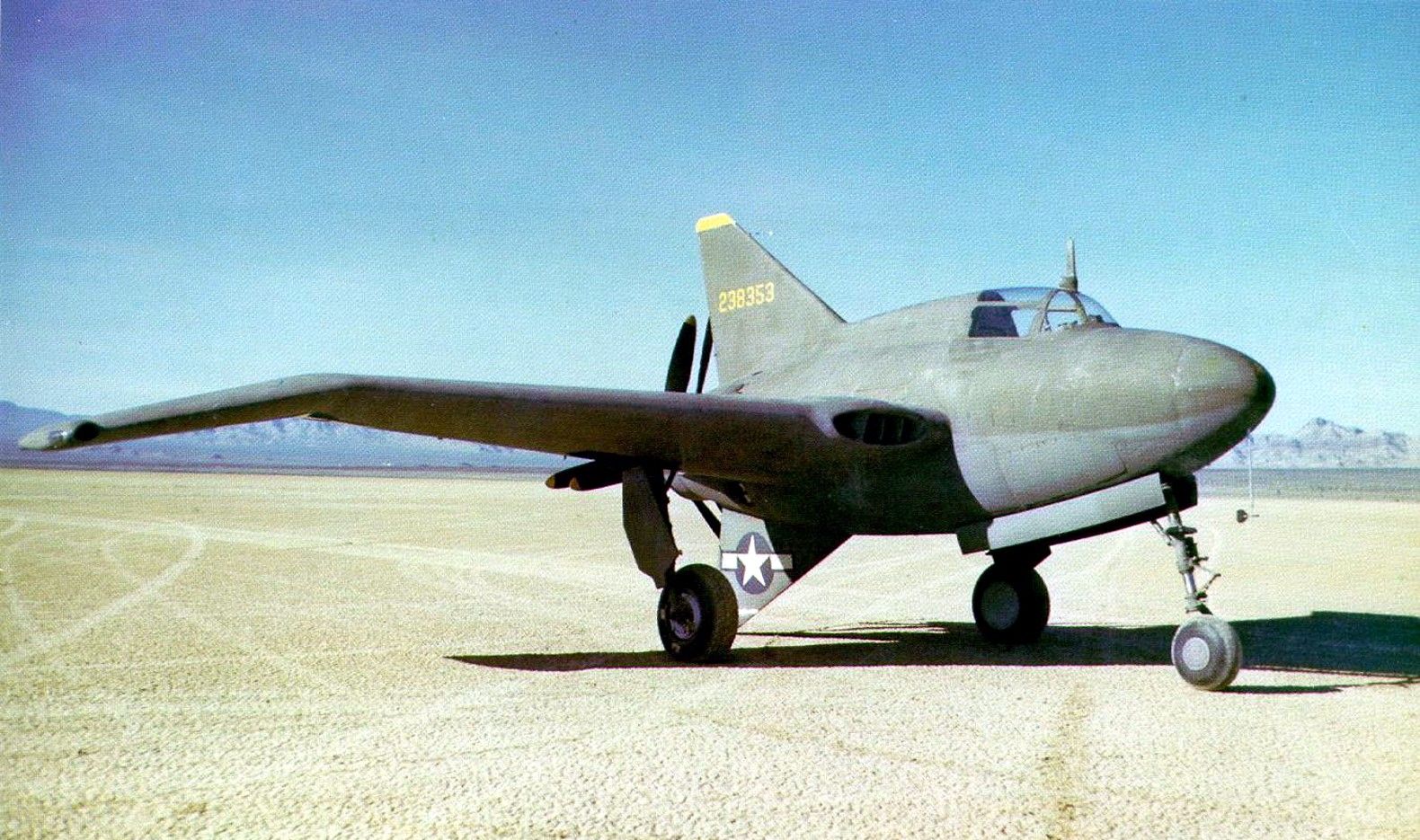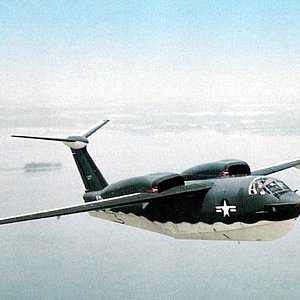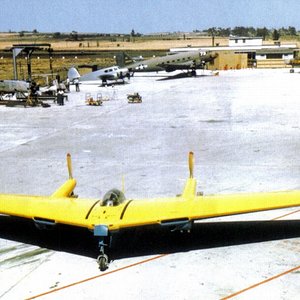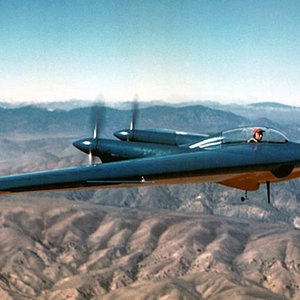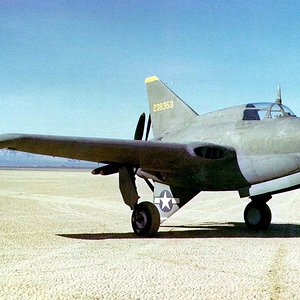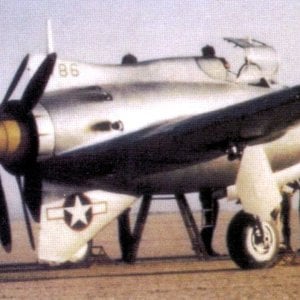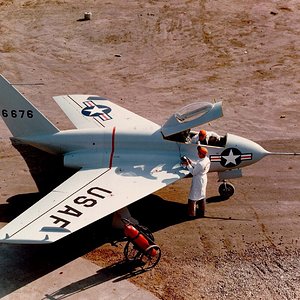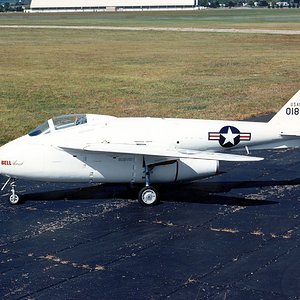Navigation
Install the app
How to install the app on iOS
Follow along with the video below to see how to install our site as a web app on your home screen.
Note: This feature may not be available in some browsers.
More options
You are using an out of date browser. It may not display this or other websites correctly.
You should upgrade or use an alternative browser.
You should upgrade or use an alternative browser.
First prototype
First engine runs in the aircraft were conducted in late March 1943, but excessive propeller shaft flex caused the engine to fail. Pratt and Whitney did not send another engine until August, causing a five month delay.
Taxi tests of the XP-56 began in 6 April 1943 and showed a serious yaw problem. At first it was thought to be caused by uneven wheel brakes, and considerable effort was placed into fixing this problem. Manual hydraulic brakes were installed and the aircraft flew on 30 September 1943 at Muroc Air Base in southern California. Eventually the yaw problem was traced to a lack of aerodynamic stability, and to fix this the upper vertical stabilizer was enlarged from a mere stub to one much larger.
After a number of flights, the first XP-56 was destroyed 8 October 1943 when the tire on the left gear blew out during a high-speed (~130 mph) taxi across Muroc Dry Lake. The pilot, John Myers, survived with minor injuries which he credited to his innovative wearing of a polo player's helmet.[2]Myers was the test pilot for many of Northrop's radical designs during the war.[3]
[edit] Second prototype
A number of changes were made to the second prototype, including re-ballasting to move the center-of-gravity forward, increasing the size of the upper vertical tail, and reworking the rudder control linkages. This second prototype was not completed until January 1944.[1] The aircraft flew on 23 March 1944. The pilot had difficulty lifting the nose wheel below 160 mph (257 km/h).[citation needed] He also reported extreme yaw sensitivity. This flight lasted less than eight minutes, but subsequent flights were longer, and the nose heaviness disappeared when the landing gear was retracted. Only relatively low speeds were attained, however. While urging NACA to investigate the inability to attain designed speeds, further flight tests were made. On the 10th flight the pilot noted extreme tail heaviness, lack of power, and excessive fuel consumption. Flight testing was then ceased as too hazardous, and the project was abandoned after a year of inactivity. By 1946, the U.S. Army Air Forces was developing jet-powered fighters, and had no need for a new piston-powered fighter aircraft
General characteristics
Crew: one, pilot
Length: 27 ft 6 in (8.38 m)
Wingspan: 42 ft 6 in (12.96 m)
Height: 11 ft 0 in (3.35 m)
Wing area: 306 ft² (28.44 m²)
Empty weight: 8,700 lb (3,955 kg)
Loaded weight: 11,350 lb (5,159 kg)
Max. takeoff weight: 12,145 lb (5,520 kg)
Powerplant: 1 × Pratt & Whitney R-2800-29 radial, 2,000 hp (1,492 kW)
Performance
Maximum speed: 465 mph at 25,000 ft (749 km/h)
Range: 660 miles (1,063 km)
Service ceiling: 33,000 ft (10,061 m)
Rate of climb: 3,125 ft/min at 15,000 ft (953 m/min)
Wing loading: 37 lb/ft² (181 kg/m²)
Power/mass: 0.18 hp/lb (0.96 kW/kg)
Armament
2 × 20 mm (.79 in) cannons
4 × .50 in (12.7 mm) machine guns
First engine runs in the aircraft were conducted in late March 1943, but excessive propeller shaft flex caused the engine to fail. Pratt and Whitney did not send another engine until August, causing a five month delay.
Taxi tests of the XP-56 began in 6 April 1943 and showed a serious yaw problem. At first it was thought to be caused by uneven wheel brakes, and considerable effort was placed into fixing this problem. Manual hydraulic brakes were installed and the aircraft flew on 30 September 1943 at Muroc Air Base in southern California. Eventually the yaw problem was traced to a lack of aerodynamic stability, and to fix this the upper vertical stabilizer was enlarged from a mere stub to one much larger.
After a number of flights, the first XP-56 was destroyed 8 October 1943 when the tire on the left gear blew out during a high-speed (~130 mph) taxi across Muroc Dry Lake. The pilot, John Myers, survived with minor injuries which he credited to his innovative wearing of a polo player's helmet.[2]Myers was the test pilot for many of Northrop's radical designs during the war.[3]
[edit] Second prototype
A number of changes were made to the second prototype, including re-ballasting to move the center-of-gravity forward, increasing the size of the upper vertical tail, and reworking the rudder control linkages. This second prototype was not completed until January 1944.[1] The aircraft flew on 23 March 1944. The pilot had difficulty lifting the nose wheel below 160 mph (257 km/h).[citation needed] He also reported extreme yaw sensitivity. This flight lasted less than eight minutes, but subsequent flights were longer, and the nose heaviness disappeared when the landing gear was retracted. Only relatively low speeds were attained, however. While urging NACA to investigate the inability to attain designed speeds, further flight tests were made. On the 10th flight the pilot noted extreme tail heaviness, lack of power, and excessive fuel consumption. Flight testing was then ceased as too hazardous, and the project was abandoned after a year of inactivity. By 1946, the U.S. Army Air Forces was developing jet-powered fighters, and had no need for a new piston-powered fighter aircraft
General characteristics
Crew: one, pilot
Length: 27 ft 6 in (8.38 m)
Wingspan: 42 ft 6 in (12.96 m)
Height: 11 ft 0 in (3.35 m)
Wing area: 306 ft² (28.44 m²)
Empty weight: 8,700 lb (3,955 kg)
Loaded weight: 11,350 lb (5,159 kg)
Max. takeoff weight: 12,145 lb (5,520 kg)
Powerplant: 1 × Pratt & Whitney R-2800-29 radial, 2,000 hp (1,492 kW)
Performance
Maximum speed: 465 mph at 25,000 ft (749 km/h)
Range: 660 miles (1,063 km)
Service ceiling: 33,000 ft (10,061 m)
Rate of climb: 3,125 ft/min at 15,000 ft (953 m/min)
Wing loading: 37 lb/ft² (181 kg/m²)
Power/mass: 0.18 hp/lb (0.96 kW/kg)
Armament
2 × 20 mm (.79 in) cannons
4 × .50 in (12.7 mm) machine guns

